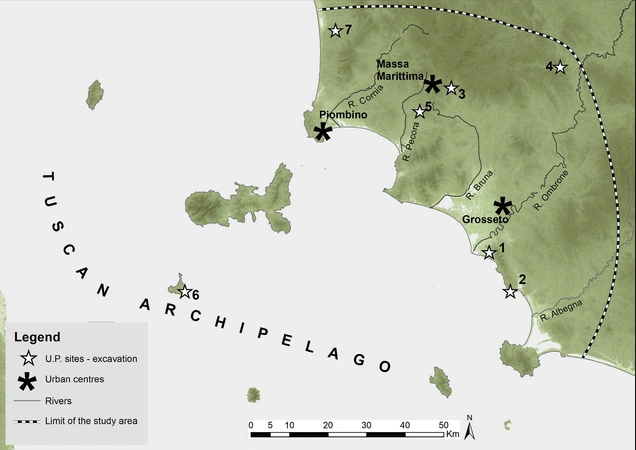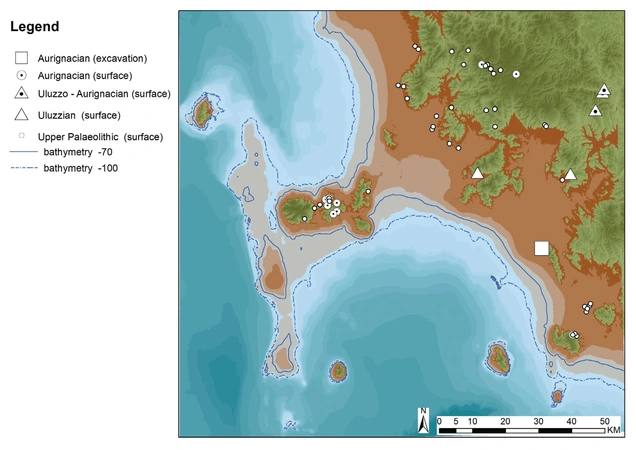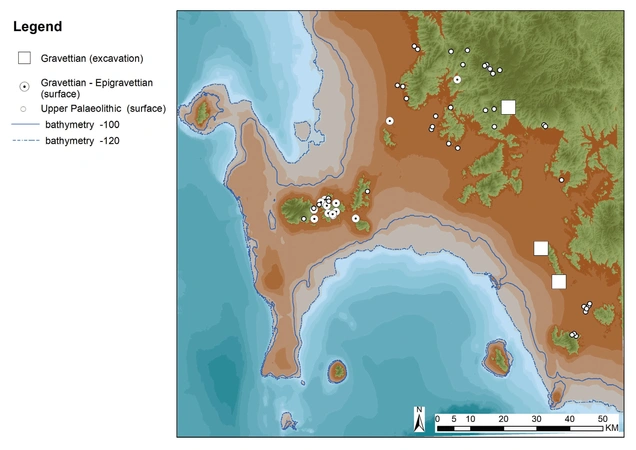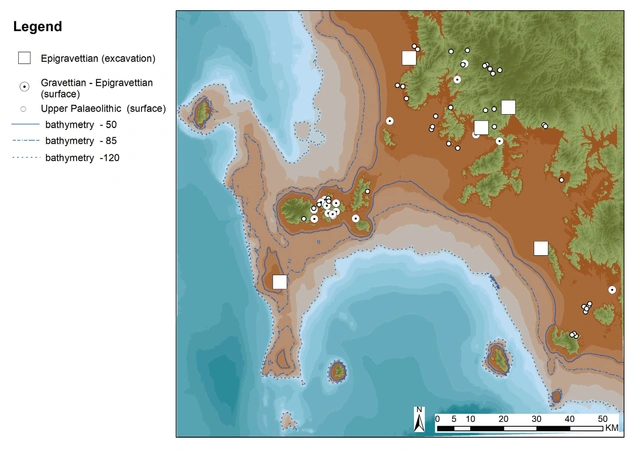Pizziolo G. 2023, From legacy data to survey planning? The relationship between landscape and waterscape in Southern Tuscany during the Upper Palaeolithic: towards a predicitive-postdictive approach, «Archeologia e Calcolatori», 34.1, 237-246 (https://doi.org/10.19282/ac.34.1.2023.26)
Copy to clipboard Download: BibTeXFrom legacy data to survey planning? The relationship between landscape and waterscape in Southern Tuscany during the Upper Palaeolithic: towards a predicitive-postdictive approach
«Archeologia e Calcolatori» 2023, 34.1, 237-246; doi: 10.19282/ac.34.1.2023.26
Abstract
During the Upper Palaeolithic, Southern Tuscany was strongly affected by geomorphological changes that significantly altered its coastal seaboard. In particular, during the Last Glacial Maximum, the sea reached a level below 100 meters. As a result of this, the prehistoric coastland included also the present Tuscan Archipelago, in particular the Islands of Elba and Pianosa, assuming a different layout during MIS3 and MIS2. In this context, the process of prehistoric occupation took place, according to different needs and criteria. The present work explores the possibility of investigating the dynamic relationship between the prehistoric landscape and waterscape by a predictive-postdictive approach. Alongside the simulation of coastal changes, the study makes use of legacy data, taking into account those derived from artefact surface scatters collected over the past decades by various research groups. The latter provide further evidence of the prehistoric occupation process. In this scenario it is crucial to highlight areas that potentially still retain some relict features of the Palaeolithic landscape. These are examined in order to better understand settlement strategies taking place during the Upper Palaeolithic and, at the same time, to investigate the relationship between inland and coastal sites in a diachronic perspective. Although still ongoing, preliminary results provide new elements for the planning of future field surveys.
Figures
Preview
Subjects:
GIS and cartography Survey and excavations
Download (PDF)Publishers:
CNR - Istituto di Scienze del Patrimonio Culturale
Edizioni All'Insegna del Giglio
This website uses only technical cookies strictly necessary for its proper functioning. It doesn't perform any profiling and doesn't use third party cookies of any kind.
Read our privacy policy for additional information.
By clicking 'OK' or closing this banner you acknowledge having read this information and accept the website's contents.





